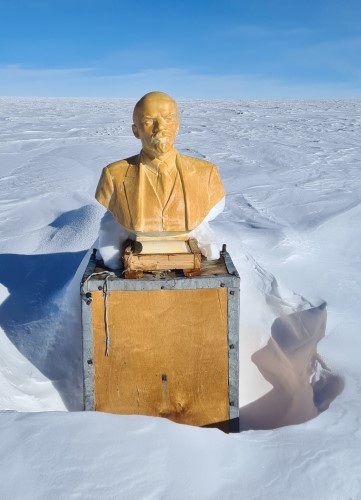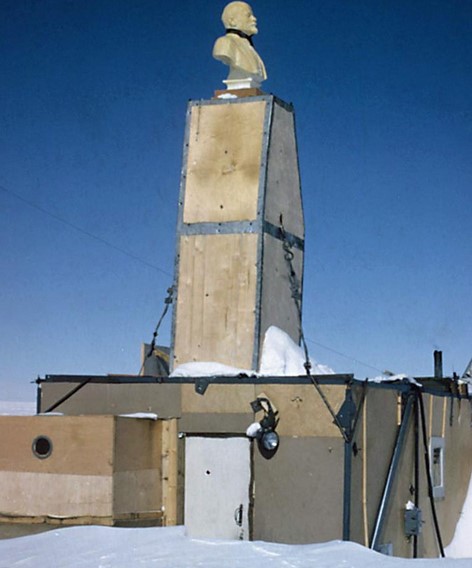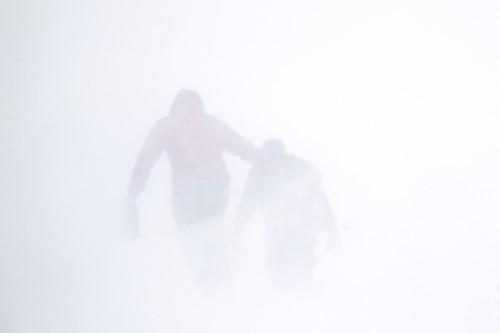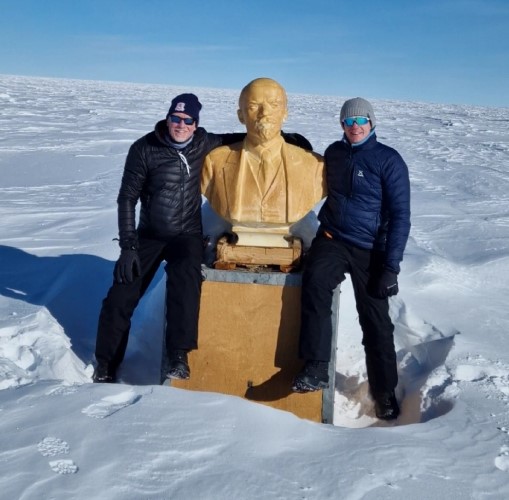Southern Pole of Inaccessibility – Antarctica

The Southern Pole of Inaccessibility, in Antarctica, is one of the orignal Eight Poles.
The precise location of the Southern Pole of Inaccessibility is even more difficult to determine than most PIAs. Apart from the usual topographical errors and accuracy of survey data, it is very difficult to determine the exact location of the ‘coastline’. Movement of ice sheets, calving of ice shelves, snowfall, freezing and melting make accurate determination all but impossible.
For all the other Poles we have taken the work of Daniel Garcia-Castellanos et al to be the definitive. They calculated the PIA to be at
- Latitude: 82°58’12″S
- Longitude: 54°58’12″E
- Distance from sea: 808 miles

More recently, in 2005, the British Antarctic Survey quoted the most accurately measurable coordinates, not taking account of ice shelves, to be:
- Latitude: 82°53’14″S
- Longitude: 55°04’30″E
This is probably still the best estimate for the location of the true Southern PIA. The same survey calculated the PIA taking ice shelves into account, they calculate the pole at:
- Latitude: 83°50’37″S
- Longitude: 65°43’30″E
However, the edges of the ice shelves are obviously one of the most variable parameters and this point is almost certainly out of date and now incorrect. However, when people ask ‘What is the furthest you can go in Antarctica’, this is probably the point they mean, since they’d presumably be starting at the edge of the ice shelf.
Historic Southern Pole of Inaccessibility
For many explorers, The Southern Pole of Inaccessibility is generally accepted to be at the site of a former Soviet Union research station which was defined by the 3rd Soviet Antarctic Expedition in December 1958. This is perhaps best described as the “Historic Southern pole of Inaccessibility”.

Photo: Olav Orheim, Norwegian Polar Institute
The station, which was used to perform meteorological measurements, was built at:
- Latitude: 82°06’S
- Longitude: 54°58’E
This location is 878km from the South Pole proper, 87km from the British Antarctic survey PIA and 5631km from the nearest city, Cape Town in South Africa. The average temperature is in the region of -58.2°C.
The base is also at an altitude of 3720m but subject to variation with the depth of snow and ice. Many people don’t realise how high the poles in Antarctica are, due to thick layers of ice. These heights are roughly equivalent to the top runs in an Alpine ski resort and staying at them can cause altitude sickness if you arrive too quickly, as Buzz Aldrin discovered when he had to be medically evacuated in December 2016 – an expedition that yours truly took part in.
Equipment for the construction of the base – an accommodation hut, an electrical hut and a radio shack – was delivered by a tractor convoy. These buildings have long-since been abandoned and are now buried beneath the snow.

All that remains visible is a bust of Lenin which the Soviets placed at the site facing towards Moscow, along with a plaque commemorating the ‘conquest’ of the Antarctic Pole of Inaccessibility. This has since been designated an Historic Monument by the Antarctic Treaty Secretariat.
Apparently poor old Lenin has not only had to suffer the extreme cold, loneliness and imminent burial, but he became part of a Cold War tit for tat with Americans in a multinational expedition paying him a visit in 1964 and swivelling him to face Washington DC. Upon hearing of this change of aspect, the Soviets promptly mounted another expedition to turn him back towards Moscow.
Getting to the Southern Pole of Inaccessibility
Getting to the Southern Pole of Inaccessibility was always going to be a logistical challenge. Where the main obstacles to achieving the African Pole were man-made, in Antarctica you are up against a more formidable foe in mother Nature.
Which Southern Pole?
There are essentially three choices for the Southern Pole of Inaccessibility. First option would be the pole defined by Garcia-Castellanos and Lombardo which we’ve used for the other poles. Second option would be the traditional pole where the Russians built their base in 1958. Third option would be the latest calculation of the Pole of Inaccessibility by the British Antarctic Survey in 2005 (we’d choose the one calculated for just the land mass, not including the ice shelf).
My first thought was to go for the third option, that being the most accurate current calculation. But after months of thought decided the Russian Base should be our first choice. It is the PIA most commonly referred to and the one used by The Guinness Book of Records for sporting achievements.
Expedition 1

Our first attempt at the Southern Pole started out from the UK on 28th December 2021 and terminated in failure on the 23rd January 2022.
You will see in our first expedition to the Antarctic Pole of Inaccessibility that we were hit by mechanical failures and logistical problems caused by four Antarctic storms, two of which were the biggest summer storms seen in at least 17 years.
Expedition 2

Our second attempt in January 2023 was the antithesis of the 2022 expedition. This time everything went as smooth as it possibly could.
Mika and I departed the UK on the 7th January and arrived at the historic Antarctic Pole of Inaccessibility just four days later on 11th January 2023.
The weather was almost perfect, with very little wind, visibility for hundreds of miles and it had even warmed up to circa -30°C.
Given such conditions we also took the opportunity to become the first recorded visitors to the ‘new’ location of the Antarctic Pole of Inaccessibility as calculated by the British Antarctic Survey.
You can read more about the second expedition, along with many more photos, here.
Date Visited: 11th January, 2023
Visited by: Chris Brown, Mika Brown, Peter Pender, Cody Bendl, Andre Martineaux
Weather: -30° Celsius/-22° Fahrenheit. Clear skies and sunny.
Coordinates Achieved: 82°06.7022’S, 55°02.0314’E (actual location on this date)
Distance from Pole: Zero metres